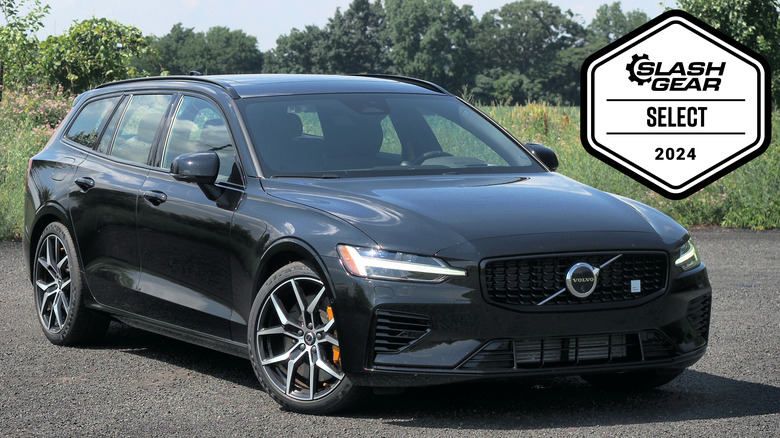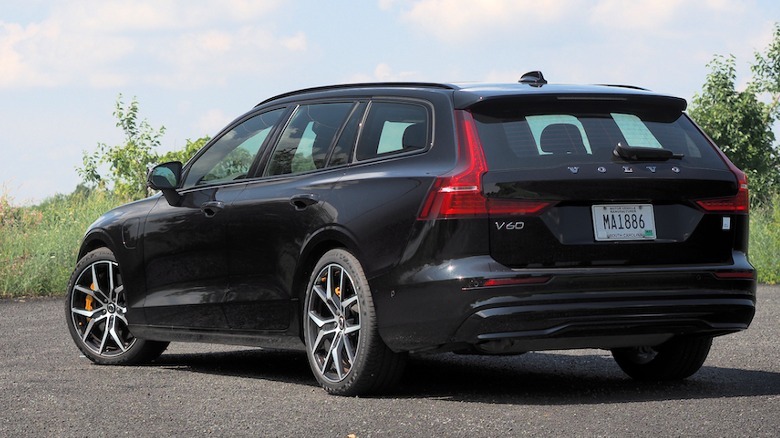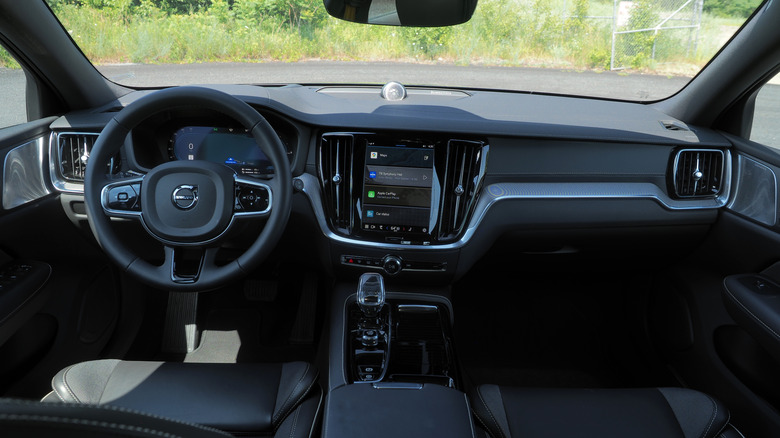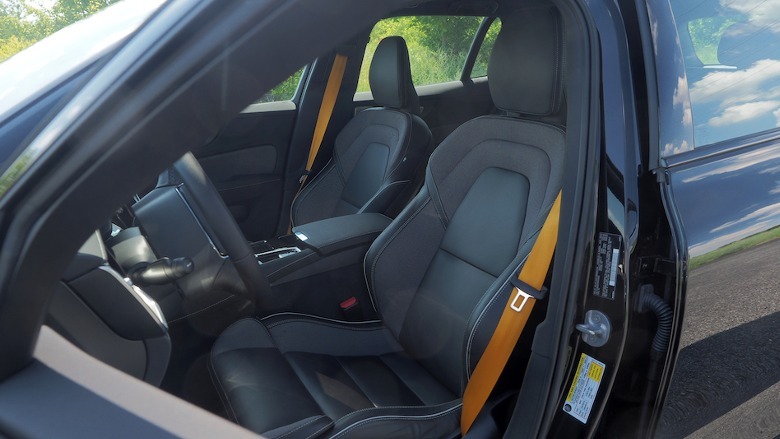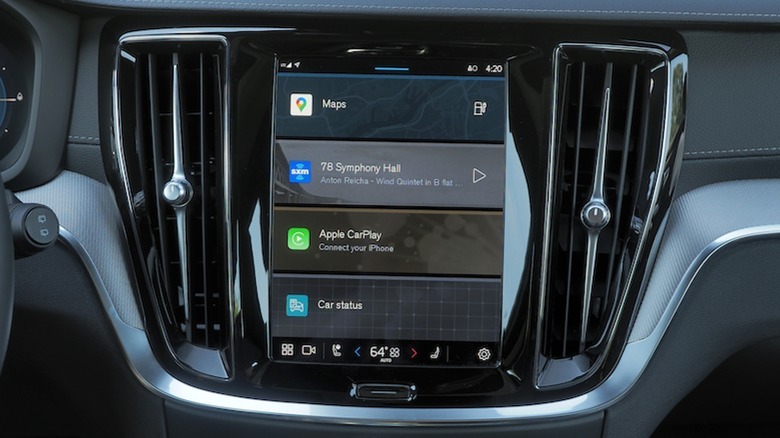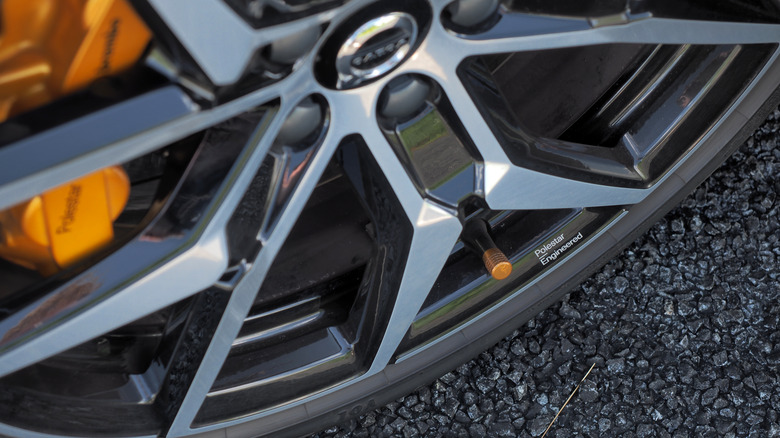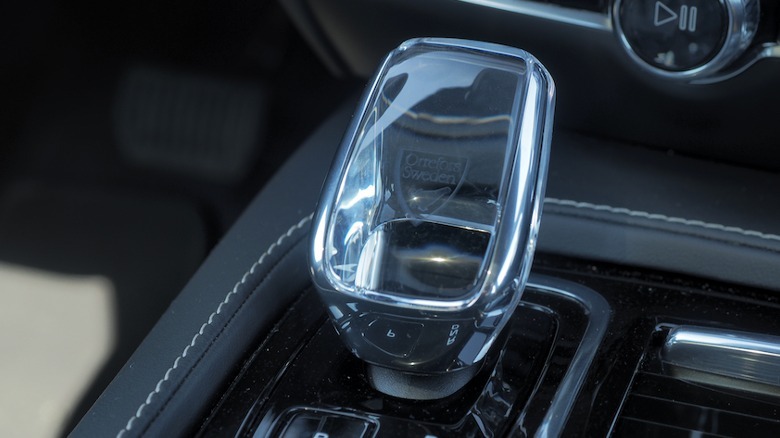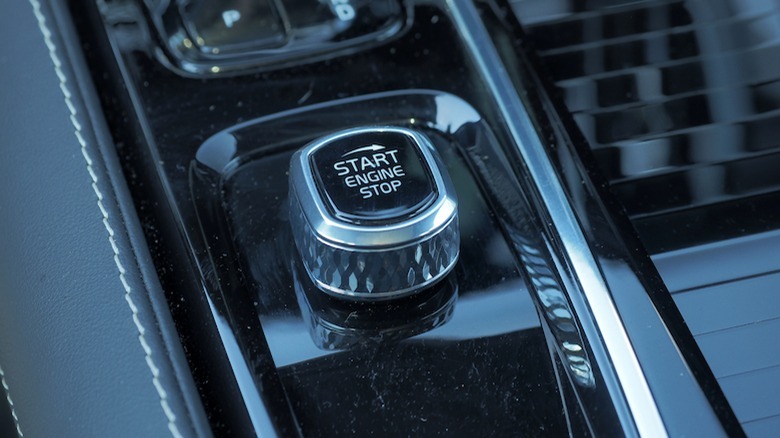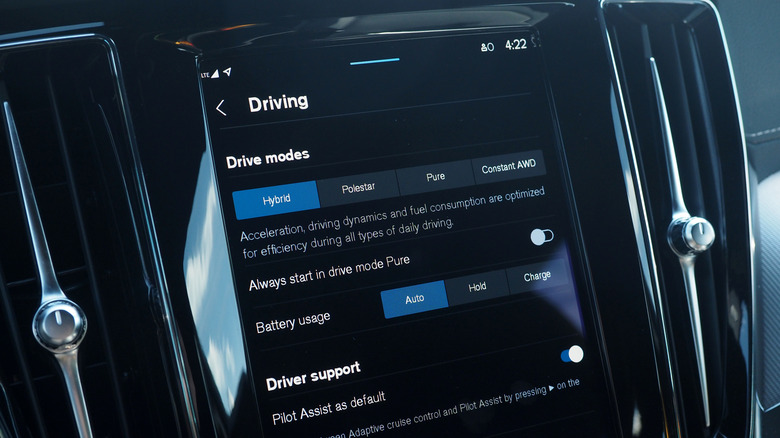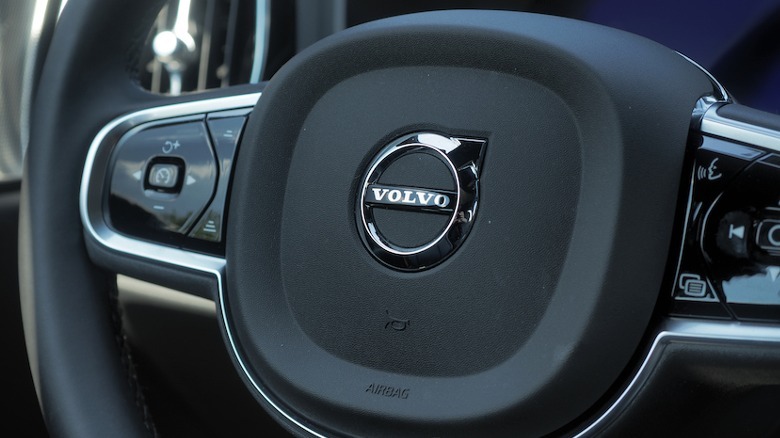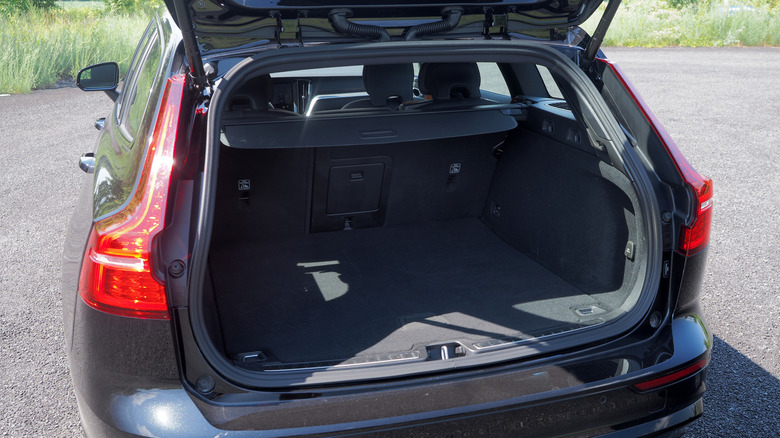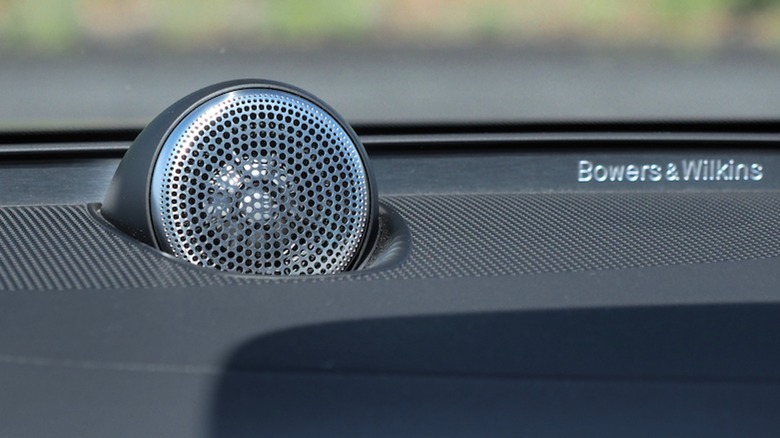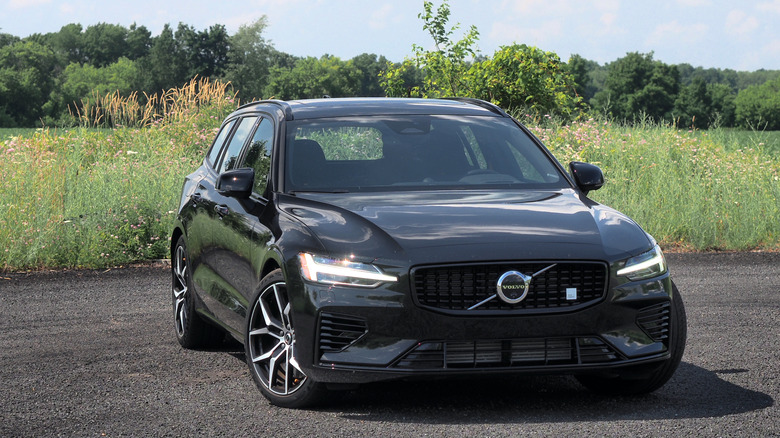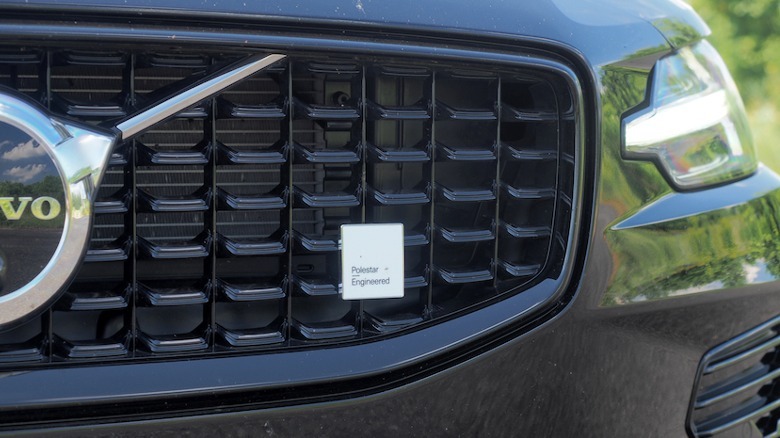2024 Volvo V60 Polestar Engineered Review: Electrified Wagon Asks A Hard Question
- Eager PHEV drivetrain delivers surprising speed
- Wagon practicality
- 41 miles of EV-only range
- Firm ride requires serious effort to dial back
- Expensive (albeit well-equipped)
Volvo may currently be divesting itself from Polestar, but that doesn't mean the Geely stablemates are unwilling to share some expertise, especially in the name of making a mighty appealing wagon. The 2024 Volvo V60 Polestar Engineered sits at the niche center of an unusual Venn diagram, certainly. A wagon, that's also a plug-in hybrid, that's also designed for driving enthusiasts wanting 455 horsepower on tap.
At this point, you probably already know whether you like Volvo's wagon style or aren't a fan. The V60 Polestar Engineered does without the V60 and V90 Cross Country's collective pretense at being a little bit like a crossover, skipping the raised ride height and the bolt-on plastic cladding. 19-inch forged alloy wheels are standard, along with glossy black grille, window, and side mirror trim, and matching roof rails.
Hopefully you like sober paint colors, as Volvo's palette seems heavily inspired by Gothenburg's winter skies: black, gray, silver, and white. Long gone are the days when Polestar's vibrant blue singled out the most potent models.
It's all very handsome, though, and practical with it. Pop the tailgate — powered, if you cough up another $200 — and there's up to 60.5 cu-ft of easily-accessed storage with the rear bench folded. Suddenly, the relatively high floor of crossovers and SUVs seems like an inexplicable compromise to make.
A cabin that's aging gracefully
Inside, Volvo's cabin is aging gracefully. Gold seatbelts add a modicum of glitter to what's otherwise a dark place, with black Nappa leather front sports seats — heated but not cooled — and heated leatherette for the rear bench. An Orrefors crystal transmission shift knob and metal mesh aluminum trim do their best to brighten matters, but you'll probably be thankful of the airiness-aiding standard panoramic glass roof.
There's a 12.3-inch digital display for the driver and a 9-inch center touchscreen running Google's software. That means Google Maps, the Google Assistant for voice control, and access to the Google Play Store. Native apps for services like Spotify are included, along with wired Apple CarPlay. Volvo spreads four USB-C ports about the cabin, two up front and two in the rear.
It's not the most visually attractive UI — EV-centric sibling Polestar uses Google, too, but skins it far more appealingly — but it's reasonably swift and functional. There are some lingering annoyances, mind, like the inability to have both the reversing camera and 360-degree view on-screen simultaneously, despite there being more than enough display real estate for that.
Gas up front, electric at the back
As with other Volvo PHEVs, the V60 Polestar Engineered effectively splits its drivetrain into two. The front wheels are powered by a 2.0-liter turbocharged gas engine, good for 312 horsepower and 295 lb-ft of torque, hooked up to an eight-speed automatic transmission. The rear wheels, meanwhile, get a dedicated electric motor with 143 horsepower and 228 lb-ft of torque.
Altogether, that means all-wheel drive — Volvo calls it eAWD — and a total of 455 horsepower and 523 lb-ft of torque. It's enough for 0-60 mph in 4.4 seconds, yes, but with an 18.8 kWh battery (of which 14.7 kWh is usable) the electrified wagon is also rated for up to 41 miles of EV-only driving. With a full tank of gas, total range is 530 miles.
When it comes to topping the battery up, Volvo says it'll take about five hours on a Level 2 charger such as might be installed at home. That's pretty slow, given the size of the battery, plus there's no support for DC fast charging — not unusual for plug-in hybrids — and indeed the plug at those stations won't actually fit into the Volvo's port. Don't assume, therefore, that you could still use those chargers just at a slower rate.
Four drive modes, but you know which one you want
41 miles, though, is plenty for most American daily car use. You can set the V60 Polestar Engineered to start in either fully-electric Pure mode, or Hybrid mode, which combines gas and electric power as the Volvo sees fit. A Constant AWD mode avoids needless profligacy but still ensures both the front and rear axles are engaged at all times, useful for potentially low-traction conditions such as winter roads.
It's tough, though, not to succumb to the lure of the Polestar mode: after all, it's that which unlocks the hybrid wagon's most enthusiastic driving dynamics. In fact, it's enough to make you wish Volvo still had a dedicated drive mode control, rather than making you dig into the V60's settings each time you want to change.
Undoubtedly it's worth the brief hassle. The Polestar-blessed wagon surges forward eagerly, gas and electric power combining with sharp steering for a nimble and precise feel behind the wheel. Tug the shifter back again, and you engage "B" mode, with a higher degree of regenerative braking: it definitely suits the V60's point-and-shoot dynamics, shedding speed aggressively (and topping up the battery in the process). Standard front Brembo brakes merge pretty much seamlessly with the regen, and the whole thing feels cohesive and decidedly fun.
Adjustable, but Volvo doesn't make it easy
Driven more sedately, some of the shortcomings of Volvo's platform decisions become obvious. Most significant is the suspension, which in this Polestar Engineered configuration relies on adjustable Ohlins dampers (in a charming gold finish). Unfortunately, "adjustable" here means manually so, with a knob atop each damper. You can get to the front pair by lifting the hood, but tweaking the rear settings requires jacking the wagon up, first.
Nobody is going to do that, frankly, and so the V60 continues its firm ride at all times. Around town, on less-than-perfect surfaces, that meant some shake and harshness, leaving passengers wistful for the softer tune of the Cross Country version. Despite the Constant AWD setting, meanwhile, I'm not sure I'd want to risk those fancy Polestar Engineered wheels in the mud. There is, at least, up to 2,000 pounds of towing capacity, and all the usual Volvo safety tech including Pilot Assist, its hands-on adaptive cruise with lane-centering system.
Where a 2024 V60 Cross Country starts at $50,300 (plus $1,095 destination), the T8 plug-in hybrid drivetrain in the V60 Polestar Engineered makes this a far more expensive prospect. It kicks off at $71,250 (plus destination), albeit with a single, well-equipped trim. Unfortunately, there's no eligibility under the U.S. EPA incentive for plug-in hybrids: while that takes as much as $7,500 off some new PHEVs, the Volvo doesn't meet the criteria.
2024 Volvo V60 Polestar Engineered Verdict
Dwindling demand for wagons in the U.S. has left us with two V60 extremes. On the one hand, the V60 Cross Country offers a more comfortable ride and is better set up for muddier conditions (it's also crying out for a full-EV version, but I digress); however, the V60 Polestar Engineered offers far greater power and PHEV flexibility.
Fans of the form will probably already have twigged that there aren't many direct competitors to the V60 Polestar Engineered. An Audi RS 6 Avant has the power, but not the electric-only range, and starts at $126k; Porsche doesn't offer a hybrid Panamera wagon anymore (and when it did, it was much more expensive than the Volvo). The Audi A6 Allroad is priced in line with the Volvo, as is Mercedes' E Class All-Terrain, but both are significantly down on grunt.
Process of elimination doesn't automatically make for a good car, of course. The V60 Polestar Engineered drives well and has the option of EV frugality, all in a practical package; it's also expensive, and rides very firm in everyday use. Your stance here will depend near-entirely on whether you think wagons are cool or passé. Those in the former group will at least have rarity to add to the Volvo's pros column.
